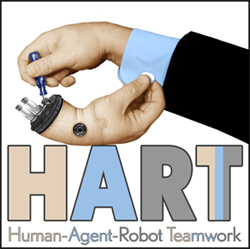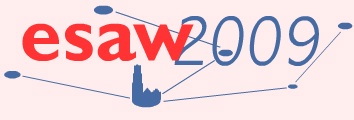HART Workshop
Supporting Joint Activity in Human-Agent-Robot Teamwork
| A full-day workshop co-located with the 10th International Workshop on Engineering Societies in the Agents' World (ESAW 2009) |
21 November 2009 Utrecht, The Netherlands |
|
 There is no cost for registration, but attendance is limited. Register now! Co-organizers: Maarten Sierhuis (NASA Ames) Jeffrey M. Bradshaw (IHMC) Contact |
OverviewTeamwork has become the most widely accepted metaphor for describing the nature of multi-robot and multi-agent cooperation. The key concept usually involves some notion of communication, shared knowledge, goals, and activities that function as the glue that binds team members together. By virtue of a largely reusable explicit formal model of shared intentions, team members attempt to manage general responsibilities and commitments to each other in a coherent fashion that both enhances performance and facilitates recovery when unanticipated problems arise. For example, a common occurrence in joint action is when one team member fails and can no longer perform in its role. A general teamwork model might entail that each team member be notified under appropriate conditions of the failure, thus reducing the requirement for special-purpose exception handling mechanisms for each possible failure mode.Whereas early research on teamwork focused mainly on interaction within groups of autonomous agents or robots, there is a growing interest in better accounting for the human dimension. Unlike autonomous systems designed primarily to take humans out of the loop, the future lies in supporting people, agents, and robots working together in teams in close and continuous human-robot interaction. What kinds of foundational software systems are needed in support of human-robot teams? The multi-agent systems community has been focusing on how distributed software agents can jointly perform tasks. For software agents and robots to participate in teamwork alongside people in carrying out complex real-world tasks, they must have some of the capabilities that enable natural and effective teamwork among groups of people. Just as important, developers of such systems need tools and methodologies to assure that such systems will work together reliably and safely, even when they are designed independently and operated with reduced human oversight. ProgramParticipation in the program is by invitation only. Selected presentations may be turned into chapters for a published volume.ParticipationThere is no cost for participation. The workshop is open to all interested parties though, due to limited seating, we may not be able to honor not all requests. |
|

ESAW 2009 |
||
Escher) © Shane Willis. Used with permission.